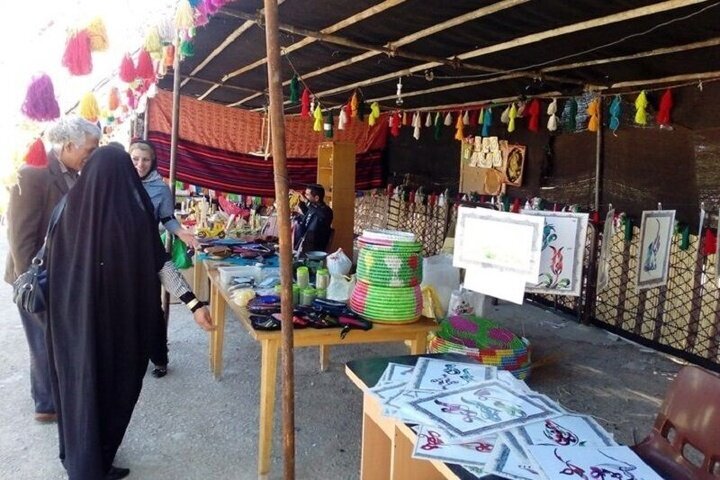Kermanshah province holds handicraft exhibitions during Arbaeen

TEHRAN—Head of Kermanshah Cultural Heritage, Tourism, and Handicrafts Department announced sales of 70 billion rials ($77,777) at the province's handicraft exhibitions during Arbaeen, one of the largest religious gatherings in the world, marking the end of a 40-day mourning period following the martyrdom of Imam Hussain (AS) and his companions at the Battle of Karbala in 680 CE. Each year, millions of Shia Muslims from around the globe undertake this pilgrimage to Karbala, walking hundreds of kilometers as an expression of their faith and devotion.
Dariush Farmani said on Monday that the temporary handicraft exhibitions were launched along the Arbaeen pilgrimage route, Miras-e Arya (CHTN) reported.
This sale was from a total of 120 handicraft and souvenir stalls set up in the cities of Sonqor, Kangavar, Sahneh, Harsin, Kermanshah, Islamabad, Dalahu and Sarpol-e Zahab, he pointed out.
He clarified that the largest sales were related to the jewelry, giveh, leather, metal tools and potteries.
Farmani stated that this year, the reception of handicraft exhibitions was very impressive, and pilgrims visited these exhibitions on their return from their pilgrimage to the holy shrines.
The handicraft and souvenir exhibitions were held in eight locations in Kermanshah province along the route of Arbaeen pilgrims by Kermanshah Cultural Heritage, Tourism, and Handicrafts Department this year, he added.
Due to the rich history of handicrafts in Kermanshah, the cities of Harsin in the field of kilim weaving, Dalahu in the tambourine craft, and Nodesheh in the production of traditional footwear of giveh, along with the village of Fash in Kangavar as a national village for traditional instrument making, have been registered as national cities and villages.
Iranian handicrafts boast a rich history, deeply embedded in the country’s cultural and artistic heritage. From intricate Persian carpets and porcelains to decorative pottery, metalwork, and textile arts, Iranian crafts are renowned worldwide for their artistry and intricate designs. Each province carries its own distinct styles, materials, and techniques, reflecting the cultural and environmental diversity.
Kermanshah, formerly Bakhtaran, the capital of Kermanshah province, was founded in the 4th century CE by Bahram IV of the Sasanian dynasty. Conquered by the Arabs in 640, the town was called Qirmasin (Qirmashin). Under the Seljuk rule in the 11th century, it was the chief town of Kordestan. The Safavids (ruled 1501–1736) fortified the town, and the Qajars repulsed an attack by the Turks during Fath Ali Shah’s rule (1797–1834). Occupied by the Turkish army in 1915 during World War I, it was evacuated in 1917. The construction of a road in the 1950s over the age-old Khorasan track added considerably to the importance of the city.
KD
Leave a Comment